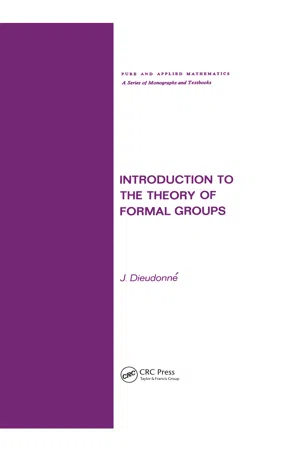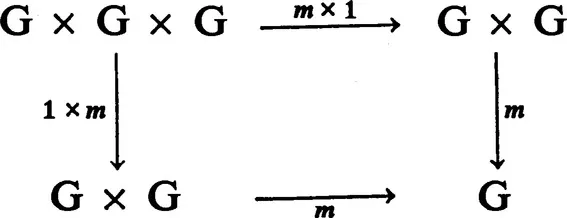
- 288 pages
- English
- ePUB (mobile friendly)
- Available on iOS & Android
Introduction to the Theory of Formal Groups
About This Book
The concept of formal Lie group was derived in a natural way from classical Lie theory by S. Bochner in 1946, for fields of characteristic 0. Its study over fields of characteristic p > 0 began in the early 1950's, when it was realized, through the work of Chevalley, that the familiar "dictionary" between Lie groups and Lie algebras completely broke down for Lie algebras of algebraic groups over such a field. This volume, starts with the concept of C-group for any category C (with products and final object), but the author's do not exploit it in its full generality. The book is meant to be introductory to the theory, and therefore the necessary background to its minimum possible level is minimised: no algebraic geometry and very little commutative algebra is required in chapters I to III, and the algebraic geometry used in chapter IV is limited to the Serre- Chevalley type (varieties over an algebraically closed field).
Frequently asked questions
Information
CHAPTER I
Definition of Formal Groups
§1. C-groups and C-cogroups



Table of contents
- Cover
- Half Title
- Pure and Applied Mathematics
- Title Page
- Copyright Page
- Table of Contents
- Foreword
- Notations
- Original Half Title
- Chapter I Definition of Formal Groups
- Chapter II Infinitesimal Formal Groups
- Chapter III Infinitesimal Commutative Groups
- Chapter IV Representable Reduced Infinitesimal Groups
- Bibliography
- Index